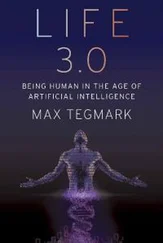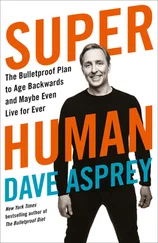The only problem was that MCT oil caused “disaster pants” even though it helped my brain. I should have bought stock in Charmin as I worked through that problem … The solution was to remove certain types of MCT using triple distillation and then use a special filtration process, leaving only one type (eight-chain MCT), which became Brain Octane Oil. (Yes, I sell it. I use it. I give it to my kids. It works. Someone had to do it! It created a revolution in food.)
You may think that avoiding carbs or fasting for a few days are the only ways to enter ketosis (the state in which your body burns fat for fuel), but adding MCT or Brain Octane Oil to your diet hacks ketosis. Brain Octane turns into ketones when you consume it, even if carbs are present. Research that came out after I launched Brain Octane shows that it raises ketone levels four times more than coconut oil and twice as much as normal MCT oil. 23In fact, the study says, “In healthy adults, C8 [the exact triple distilled version in Brain Octane] alone had the highest net ketogenic effect over 8 hours,” and it could “help in developing ketogenic supplements designed to counteract deteriorating brain glucose uptake associated with aging.”
Normal MCT oil is a conundrum for oil chemists. There are four different lengths of fats that are called MCT. All four are technically saturated fats, but unlike other saturated fats, your body won’t use MCTs to make cell membranes. It’s as if they are meant to be burned for energy. It is more accurate and useful to start calling MCTs “energy fats” instead of saturated fats. That’s why I do not count MCT oil as a saturated fat and why you can laugh at anyone who says to avoid MCT because it’s saturated. Sadly, the most abundant and cheap MCT, lauric acid, which makes up half of coconut oil, does not have these special energy powers.
To live longer and heal faster, I recommend adding either C8, its weaker cousin MCT, or its even weaker cousin coconut oil to your coffee, your salad dressings, smoothies, and so on. My kids love it drizzled on sushi! These “energy fats” do not count in the recommended ratios of fat in your anti-aging diet, as they will convert to energy instead of being stored on your body. These are extra/unlimited sources of fat. Also, when it comes to sourcing, I recommend purchasing MCT oil made from coconut oil, not palm oil. Most MCT is derived from palm oil, and palm deforestation poses a serious threat to the environment and kills orangutans. I switched to a coconut-derived MCT oil several years ago, because I simply couldn’t imagine feeding oil to my kids that was created from practices that harm the environment they will inherit.
The discovery of using energy fats in the morning helped me benefit from autophagy because I was able to fast without getting cold or hangry (which, by the way, was added to the dictionary in 2018, the same year as biohacking ). Because butter and MCT oil do not contain any appreciable quantity of protein, I was able to feel full and burn ketones while temporarily stressing my cells, which thought I was fasting and started recycling protein more rapidly. This boost in autophagy without hunger is one of the most profound benefits of Bulletproof Coffee. It is a permanent part of my quest to live to at least a hundred and eighty.
Yet, since I made my first cup in 2004, I’ve continued to discover more reasons why it works. To my surprise, one of them has to do with melanin, the pigment in your skin, which also exists in other parts of the body. When exposed to sunlight or mechanical vibration, new research indicates that melanin likely has the power to break apart water molecules, freeing up oxygen and electrons that your mitochondria can use to make energy. 24Our bodies actually create melanin by linking together polyphenols, chemicals that occur naturally in plants. Polyphenols are packed with antioxidants and thus offer us a powerful defense against aging. The best ways to stimulate melanin production are to eat plenty of leafy green plants and herbs, drink tea and coffee, get adequate sun exposure, and exercise regularly.
This new information about melanin made me think back to my time in Tibet. I noticed that locals who carried all their belongings on the backs of yaks made sure to always have blenders hooked to portable batteries just to make yak butter tea. They were clearly onto something. Tea and coffee contain large amounts of polyphenols. Coffee also contains melanin and similar compounds called melanoids. Is it possible that Bulletproof Coffee and yak butter tea are so energizing because the mechanical vibrations from the blender break up the melanin and melanoids, 25providing free oxygen and electrons for your mitochondria? Is this why the yak butter tea made me feel so much better in high altitudes where there was less oxygen? I think so.
COFFEE + TIME = KETONES
Recently I interviewed Satchin Panda, a leading researcher on circadian rhythms, the natural twenty-four-hour cycles of all living beings, and learned something new about Bulletproof Coffee. According to Satchin, it’s part of our natural rhythm to start producing ketones at the end of our fasting cycle. For most of us, that would be in the morning before we break our fast with the aptly named meal, breakfast.
Those ketones have a huge impact on our cardiovascular and brain health. Satchin observed that when mice produce ketones toward the end of their fasting cycle, those ketones go directly to brain cells called clock neurons , which monitor the environment in the brain and help to regulate circadian rhythm. When ketones reach those clock neurons, they receive a signal to become awake and alert and begin what is called exploratory activity. Of course exploratory activity is more pleasant than desperately wanting to hit the snooze button in the morning.
This makes perfect sense from an evolutionary perspective. Just a couple hundred years ago, our ancestors fasted all night and then had to hunt for food in the morning. Their brains and muscles had to work really well in that hungry state in order to successfully find food, and ketones were the answer. This is why we are programmed to build up ketones during the last couple of hours of our fasting period. Those ketones give our brains, muscles, and hearts more energy so we can hunt—exactly what Satchin has seen in his lab rats. An hour or two before they were fed in the morning, they got up and started looking around, exploring, and getting ready to hunt.
The problem is that most people don’t fast long enough to take full advantage of this biological phenomenon. According to Satchin, there are tremendous health benefits to extending our daily (or nightly) fast. He says that when people limit their eating window to ten hours and make no other dietary changes, they see reductions in inflammation levels, triglyceride levels, and cancer risk, along with improvements in sleep within weeks. Is this because of the natural boost in ketones or because intermittent fasting boosts autophagy—or both?
But remember, you do better when you practice ketosis intermittently. Staying in ketosis for long periods of time compromises your metabolic flexibility—your body’s ability to burn either glucose or ketones for fuel. Maintaining metabolic flexibility is incredibly important for your longevity. There are two states your body must be able to handle effortlessly. The first is periods with ketones and no carbs, and the second is periods with carbs and no ketones. To gain metabolic flexibility, the best thing you can do is cycle in and out of ketosis every week. To do this, you limit carbohydrate intake most days, and on one to two days per week you eat low-sugar carbs. While this works for die-hard biohackers, most people enjoy eating more carbs. With the power of technology, it is possible to have both ketones and carbohydrates present in your body at the same time, which can also generate metabolic flexibility. To do this, eat moderate low-sugar carbohydrates like white rice or sweet potatoes, and at the same time consume lots of energy fats. That way, you’ll have some ketones present for your neurons and some glucose present for your brain’s maintenance cells. Most people find this more sustainable than a pure cyclical ketogenic diet, but both work.
Читать дальше












